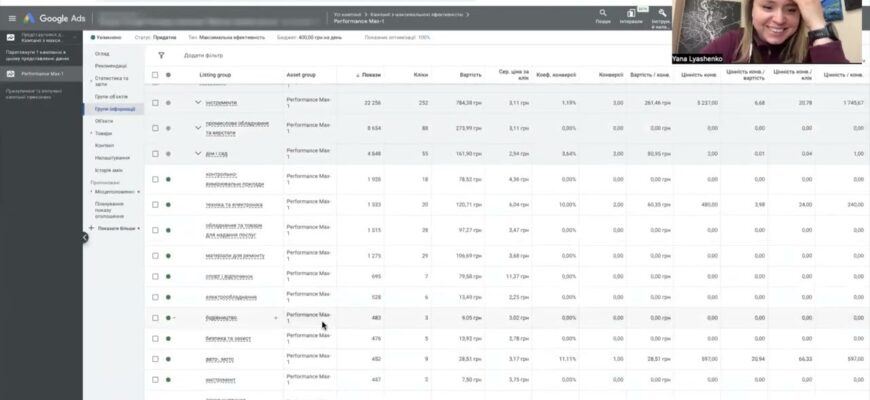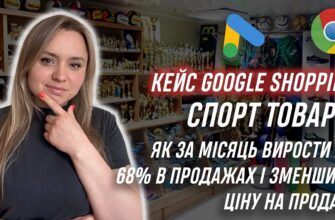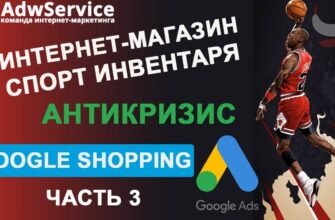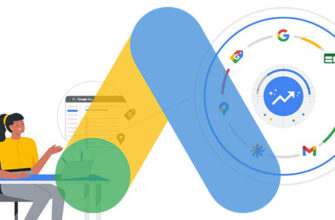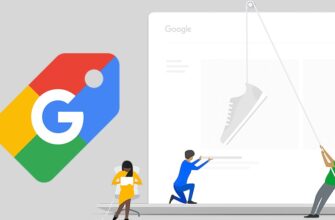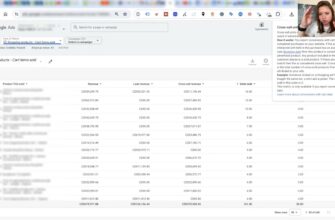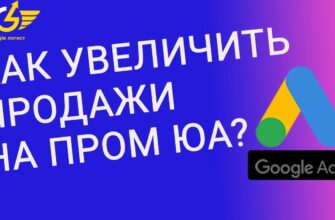- Advertising account topics and issues
- How does Performance Max work?
- What does performance art need to work properly?
- Setting a conversion tag for the site
- Establishing an attribution model
- Analyzing why we get few clicks
- Betting strategy
- Analyzing object customization
- Why connect call tracking
- Use of the “target profitability” strategy
- Use of the “target return on investment” strategy
- By-category analysis of campaign results
- How do you navigate a budget in performance art?
- How do you segment products?
- Analyzing the “Tools” category
- Correctness of categorization of goods
- Gradation of goods by price ranges
- What do you need to analyze to get a weighted average?
- How should a CPA be assigned?
- Division of goods into 3 campaigns performance
- Why make a breakdown by price?
- Change in profitability
- About errors in feed design
- Launch budget and “maximum conversions” strategy
- Necessity of callteking application
- Bottom line. What to do to increase the number of sales
- What profit margins are worth starting with?
- A breakdown of products into three performances. Viewing products by category
- Conclusions
Hi everyone. My name is Yana Lyashenko and I am a Google logistician. I am engaged in delivering targeted business audience with necessary parameters. And in today’s video we’re going to have a breakdown of the advertising account.
Advertising account topics and issues
The subject is power tools. In general, we have the following problems. The first is very few clicks, traffic. It is unclear how to increase it. The second is that there are very few sales and their price per conversion is very high.
How does Performance Max work?
So, where do we start? Let’s put it this way, if we plan to continue working with Performance Max ad campaigns, you need to understand that this type of ad campaign uses artificial intelligence and machine learning in its work. This means that the system has some predictive evaluation models of how it should proceed. She on these predictive evaluation models should overlay the analytics of user behavior that buys specifically your, in general your goods and additionally behavior on your site.
How many calls and sales will I get by ordering contextual advertising from you?
I need to calculate the conversion of my website Describe
the task
in the application
Calculate potential ad revenue Google
contextual advertising calculator
Because you all have different sites, even the template, if it will be the same, but at least the design is very different, someone likes one thing, someone else. You also have to take into account the fact that you have different KPIs for the project. KPIs are targets. For some people it is cost per conversion, for others it is sales or sales volumes, and so on. This all imposes certain limitations on the system and, accordingly, adjustments to this predictive mechanism that it will use. Because in its work, performance operates with such an indicator, which is called “predicted conversion rate”.
What does performance art need to work properly?
So, what you need for performance, given this preliminary data, what I said in order for it to have at least more or less access to your database. That is, to the behavior of your users on the site. The first is dynamic remarketing. But that’s always a bad thing on Proma. You need, I would recommend, I will say this in every video, to form a request for them to finalize it. Because they take money from you on time, but they can’t finalize the functionality. Although this problem exists on Shopify as well.
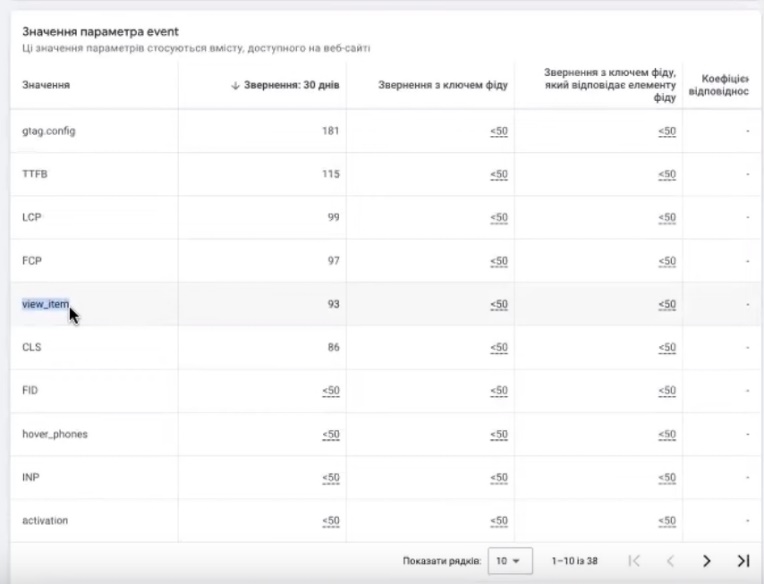
Where am I going with this? There’s a certain set of events that Prom automatically fluffs into Google tag, that Google tag, their main and stuff. But it doesn’t give the system sweat analytics, performance doesn’t see what’s going on with the products on the site. What do I mean by this conditionally? What is being done to the products on the site? Your performance with the help of this can see what is happening with the goods. It can be that a person went to one product item, started coming in, then walked around your site, looking at completely different products. Performance needs this analytics. The second thing is that you can’t solve this item yourself. It is necessary to form an application to Prom. The more such applications there are, the more likely Prom will finally pay attention to it.
Setting a conversion tag for the site
The next thing is that you need to put a conversion rate for your account that’s not from fourth analytics, which is going to be the purchase conversion tag on Proma. I’ll have a separate video on that. I won’t dwell on how it’s created here. But why is it important? Since the performance works on artificial intelligence, it must conditionally and the very principle of Google advertising assumes that every moment in real time there is some kind of auction, that is, going out to auction. And the system needs to predict or make directional changes in the search for potential audiences based on your analytics. So, the faster those analytics come into Google Ads, the better. Why?
Because it’s from fourth analytics. Let’s put it this way, not only do conversions come into the fourth analytics office, they can be up to 72 hours late. The more conversions you have, the longer the delay. It should be something else, though. Is that logical? And he can still change these conversions during the week, there are sequence models. He assigns values to them, he can change conversions based on them, reassign them to some campaigns, assign them to others, change the value, and so on. That is why it is desirable to have a conversion tag.
Establishing an attribution model
Next, if your account has less than 200 or even 500 conversions in a month, your attribution model is not data-driven, it’s buying. Oops purchase… Oh, God, last click. I’m already talking. Last Click. That is, on this newly created conversion, you will select last click.
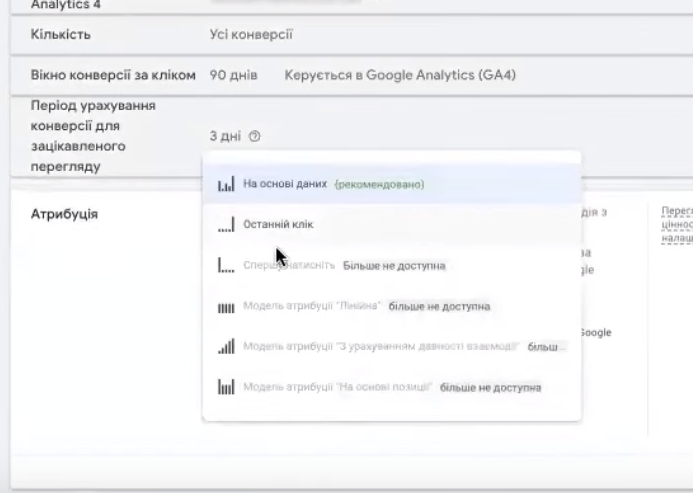
On all other conversions, be sure to select “additional action”. Why? Because you have so many different conversions being used here. This is basically. In idea should duplicate each other and here add_to_cart, these are all conversions in the “Main” block. So they will be used by the system for its optimization.
This is a problem for you. Because you want to use a “Maximum Conversions” strategy in these campaigns, with a target conversion limit. All conversions that you set as the primary conversion will take part in the optimization. And why would you want to optimize an advertising account for a duplicate of that very purchase goal? Then you will face the fact that you want to see the real numbers in the account and you can’t, because the system has already optimized on completely different analytics. I mean, we’ve fixed it. We have a base for performance in the settings is the tag buy. Well, it is advisable to write a request to Prom. I recommend to everyone that they still solve this issue with dynamic remarketing. Yes, at least this way they will be able to beat Shopify in the advantages. Because Shopify also has a lot of technical problems.
Analyzing why we get few clicks
So we’re going in the next direction. Why are we getting very few clicks? Because there are a few things that account for that. The first point is the structure of your, the stuffing in terms of the volume of goods that you’re using here. I’ve already started to re-record this video a little bit here, then I’m going to have a few groups of items here. Right now we have 6,297 items in this group.
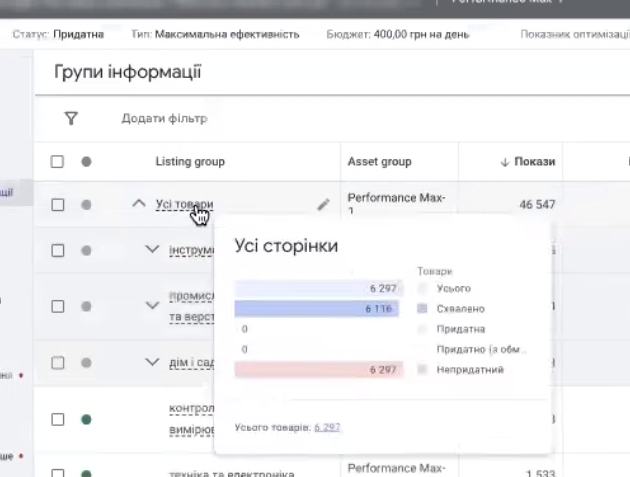
Of course, not all these goods are in the status of “allowed to show”. Because here it writes “unsuitable”, because the group of objects “suspended”. Somewhere around 45% of the items are out of stock. Well, we can estimate that somewhere around 3000 products could definitely potentially show up.
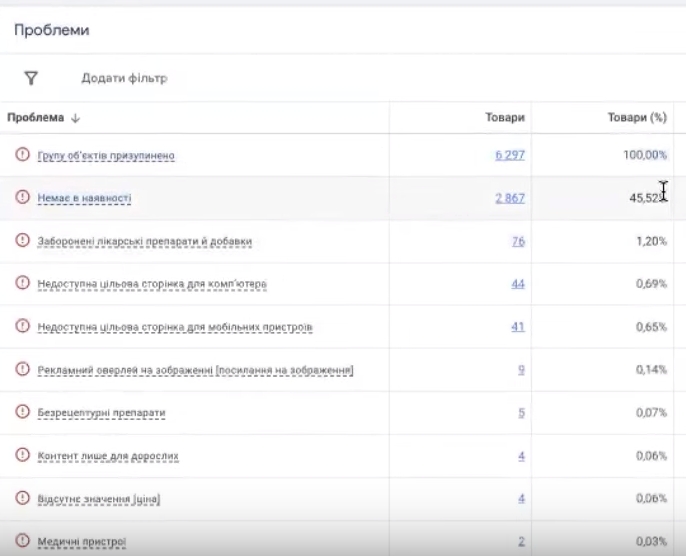
Betting strategy
The second thing is the bid customization strategy you’re using here. This bid setting strategy is called “maximizing conversions”. Maximum conversions is always a rather primitive strategy.

It doesn’t have a fairly advanced intelligent rate assignment system like profitability has. Plus it always has fewer conversions. Secondly, you should take into account that in this case, in addition to the fact that you use this strategy, you have an additional limit of 60 UAH. As we can see, the system cannot cope with this cost per conversion, even taking into account the fact that you have some conversions duplicated. That is, they’re repeated. So this constraint is either very hard or very unrealistic in this context for the system. This has to be taken into account.
Analyzing object customization
Next. I wouldn’t recommend doing stuff like you did right here in the objects.

Because it, while it might not have been used by your performance throughout all of this activity, at some point Google might actively take it for targeting. If we look at this structure, we’re going to see here…. Not only that, there will be pictures, excuse me, not related to power tools at all, a cottage in the countryside, a lake, something incomprehensible at all. What were you hoping for?

Second, who’s going to read all this? Holy fuck. Nobody’s gonna read it.

Make normal or make a group of objects without objects. To do this, you have to click the plus sign, that’s scroll and click save. That’s it. And you’ll have a group of objects like this. That’s it. You don’t need to do anything else. Then you go to the information group, select the goods that you will need. That’s locked.
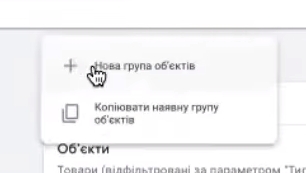

Why connect call tracking
So, let’s get back to our betting strategy. The “maximize conversions” bid assignment strategy. It’s a pretty good strategy, but for power tools, in order for it to work well, you need to add another target, which is called – phone calls. But not these clicks on phone numbers or there hidden or shown phone numbers, there in the viewing area, not in the viewing area, but connect normal dynamic calltracking. Binotel, Ringostat are available on Prom. You choose according to your wallet, your pocket, your own preferences. You pick it and plug it in. For power tool topics, this will be very relevant. Because, most likely, you have goods above some certain check, at least, on which will be constantly called.

Unless you had a situation where you were sort of advertising, you were fine with everything. Then Google put “limited by budget.” You didn’t increase that budget and it continued to generate that same purchase goal. But the phone calls stopped coming in altogether, or their quantity decreased, or their quality changed, etc. To avoid this, it is desirable to connect dynamic call tracking and not to bother with these clicks and so on. It’s as good as a poultice. Google cannot optimize on the basis of it. A phone call is a specific event that goes into analytics, which you can work with beyond performance.
Use of the “target profitability” strategy
Next. If we want to launch on the maximum conversion, we give these two goals and then we can work with it. But if you want a cheaper price per conversion, you can not launch on such a budget size as 400 UAH, and even more so to set it immediately target CPA, as in this case – 60 UAH, because it will not work. Not only that, you need to analyze your product range and determine either on the basis of practice, or on the basis of just a hypothetical analysis, on which products can be, go phone calls, and on which can be purchases. Or usually somewhere in between there’s some overlap. Because usually scaling in traffic, in the number of conversions, and so on, will only happen on a “target profitability” strategy.
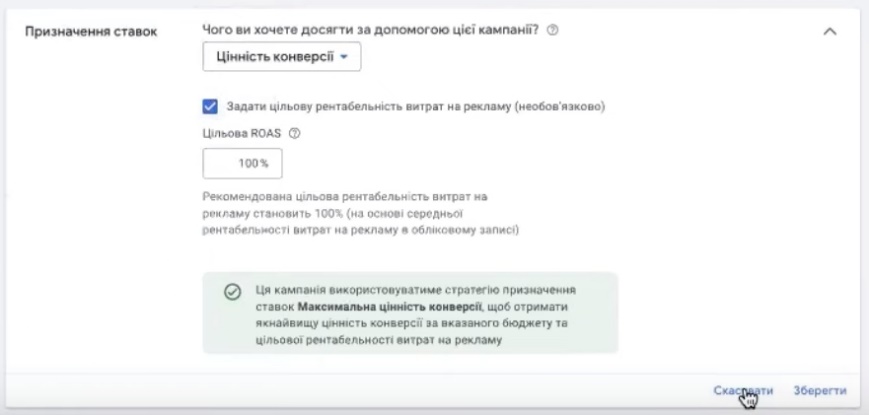
All strategies that will deal with maximum conversions, target price per conversion – these are very excellent strategies to support in an advertising account, if your goal is not to scale, but to get a certain result, for example, a stable number of sales. Because you either can’t handle a larger number or you have some other reasons, maybe religious reasons, I don’t know. And you have to keep a certain price for the cost of conversion, but given your current combination, it will not work for you.
Use of the “target return on investment” strategy
Next. Without phone calls, a “target ROI” strategy with a profitability target is probably right for you. How do you set that profitability? You can start with something average. For Ukraine, this would be 500-600%. And then gradually raise this profitability, preferably by looking at the result. It is important to understand that the task is essentially performance, to reduce the discrepancy between what you set in the settings and what you actually get. Because profitability does not work here as a… Let’s even let’s put it this way, profitability it basically in performances that target price per conversion it works as a reach limiter. When it doesn’t work like that you set and it promptly finds at that cost or at that profitability you sales. No, it’s just being a coverage limiter either useful or useless. They’re already based on the analytics collected before that.
The analytics are taken literally 30 days in advance, or 28 days, even. The worse the analytics, the worse the return on performance in fact. So you don’t look at that return on performance as something that you set either Google is doing well or not doing well. It’s something that you have to play with all the time. Because it’s always a coverage limiter, so you understand. So when we set profitability, no matter how high or low, and we do not get the desired value in the actual column, there value for cost, it does not mean that the performance is doing something wrong.
It just has an algorithm built into it, when its task is to reduce this discrepancy between what you gave in the settings and what you actually got in a certain period of time. But there is another nuance, one big one, which plays a big role in this plan and from which you cannot get away. What the programmers described is good, and the second thing is that you have to realize that this is a commercial institution whose task is to earn money. Therefore, over time, it will still force you to change this profitability to a smaller side in order to still have a discrepancy, it was and it went downwards. So when they set a lower profitability – they always get a lot of hits. When they set high profitability, they are always limited. The main thing here is to keep a balance between this, start with something low and then build up this profitability accordingly. At the profitability will cover much more, much better and clicks of all, then it will be different. But this profitability should not just be assigned mindlessly to this product range that you have.
By-category analysis of campaign results
Because here I was doing the first version of the video that was shot here, the layout, here we had all the products. What do we see? We see that for these, well, I took 14 days, but there were not pure 14 days of clicks. We have these types of products in this category, there are 6,000 or so products. 3000 of them, in principle, are ready to be shown. Overall, we see a picture like this. I see that the main share of shows is several dozen times more than these all categories. More precisely, the types of goods received tools.

There are, for example, goods, there are metal products, trucks, buses. See, there’s very few displays. There’s even a “Beauty and Health” category of this store here for some reason. “Wagner,” I don’t know what that’s for. “Glue squeezer.” I would recommend that you review your product types very carefully. Because product types are involved in targeting. So beauty has little to do with your power tools here.
There are categories that get shows and categories that don’t. If our task is to increase the amount of traffic, that is, if we are considering just a stupid primitive format to increase the amount of traffic, then, at the very least, we need to either increase the size of the budget and not to clamp down on this target price for conversion. That is, make it higher. In our case it is quite high – 232 UAH. Either to bet on profitability. Or to pick out some categories of goods that received no impressions at all, or received a much smaller number of impressions than others. This does not mean that each section of this category should be allocated to a separate campaign.
It can be done and it can, it can work. But keep in mind that it will be much more expensive in terms of budget. Because that’s where the first test budget is going to be. We didn’t do well enough here in terms of cost per conversion. So it’s not a fact that all these clicks that you’re going to collect, they’re going to be profitable for you. Because there are guys who have crushed it there, then they say it doesn’t work. It’s the one that works. The only nuance is how you set it up or how you control it and channel it. That’s the first thing.
How do you navigate a budget in performance art?
The second thing is why it can’t the system can’t do on the size of this 400 UAH budget. Because you have to remember, performance uses, any advertising campaign in Google Ads uses an even method of budget allocation. This means that it takes this daily budget, there it forecasts a monthly budget and approximately calculates the traffic volume for the month, taking into account the frequency of queries, your category, your previous analytics, who collected the first clicks there, and reserves a budget for each of these categories. Will she spend this money? No, she won’t. Because the prediction of that traffic is as primitive as we’ll see in the keyword planner. So it’s 10, 100 there, something like that, 100000, and the discrepancy is very large. The overall dynamics will converge according to the general trend, but this is not a very presentable statistic.
How do you segment products?
Therefore, if you want to increase the amount of traffic on some categories or types of goods, they should definitely be separated into a separate campaign. That’s it. So it’s like this. How you segment them is another story. I always recommend going from more to less. Into the smaller highlighting what is not effective or what gets little traffic. This is always the most proven story. You don’t need to generate 1001 campaigns, because you may not earn it or it may be quite expensive. Because performance needs time for it to find traffic, especially when you need to reduce the cost per conversion from 230 UAH to 60 UAH.
Analyzing the “Tools” category
Next. If we look at the “Tools” section, there is quite a different format. Yes, there are “hand tools”, “kits”, “spare parts”, “woodworking”, “pneumatic”, “power tools”. Here again, only one segment is leading, like power tools. Here are 12,000 impressions. He’s got one conversion here for 408.
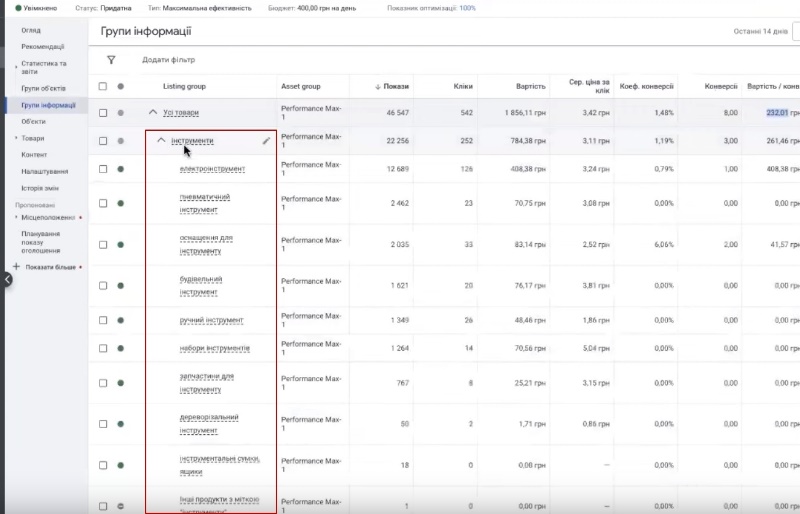
It would also be desirable to go deeper here and see where your performance sawed the money. Because if you look at it like this, it looks like 400 UAH for one order is very expensive. If you look at the commodity by commodity, he, you see, he stretched all this money between all these thousands of goods, you see, tiny by tiny – 15, 14, 5, 3 somewhere, a hryvnia. See, here’s a hryvnia. In general, it turned out as much as 400 UAH price for one sale. Because we have converted into a conversion of what? A powerful cordless impact wrench.

That’s the kind of nuance you have so you don’t consider that expensive price per conversion. If it’s super, not that it’s super expensive that it’s one 408 sale. Performance actually did a pretty good job of stretching those shows, split. And it’s normal when in your niche there is a conversion generated from one or two clicks, but another nuance or Google correctly finds the audience right away, which could convert, respectively, to you.
Correctness of categorization of goods
The next thing is that you have a lot of all-too-many mistakes. Exactly, I don’t know, here’s the category, why you’ve categorized the sharpener, the tape for the sharpener, and the whisk for the construction mixer into utensils. But maybe, uh. You know, it’s none of my business. Maybe stay out of it. You need to redesign your product types a little bit, because they are product types.
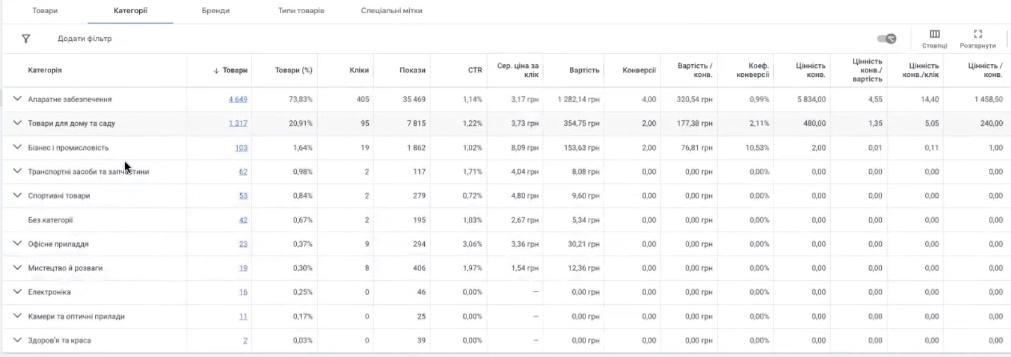
And apparently I will look not by product type, but by Google category, because they could more or less determine something there correctly. Although there is in the “Art, hobby, needlework” you have there Google product category also somewhere there are incorrect. You need to review the whole product to product range. Here, if I look at “hardware”, for example, I did here, it doesn’t show up in the rollout. I made a report like this in the category report editor. What do I see here? There are categories, for example, that got 1,300 hits there. Yes? And even two conversions. Vacuum cleaners, these vacuum cleaner accessories. There are, for example, oils have received nothing at all. There are some categories, some tools, there are 5000 impressions. Your task in order to understand how to split these advertising campaigns between them is not just to look at the types of goods or categories, but to look at the generality of these categories between them, what they relate to in commonality in order for Google was more convenient to understand who to show this product.

Gradation of goods by price ranges
The second thing is to be sure to look at the price ranges of your product lines. Because accessories can be mixed in with some basic goods. For example, I don’t know, it is possible there, for example, there are some spare parts or components to those guns or some other commodity items or somehow there are grinding wheels, there are these wheels, for example, to certain commodity items.
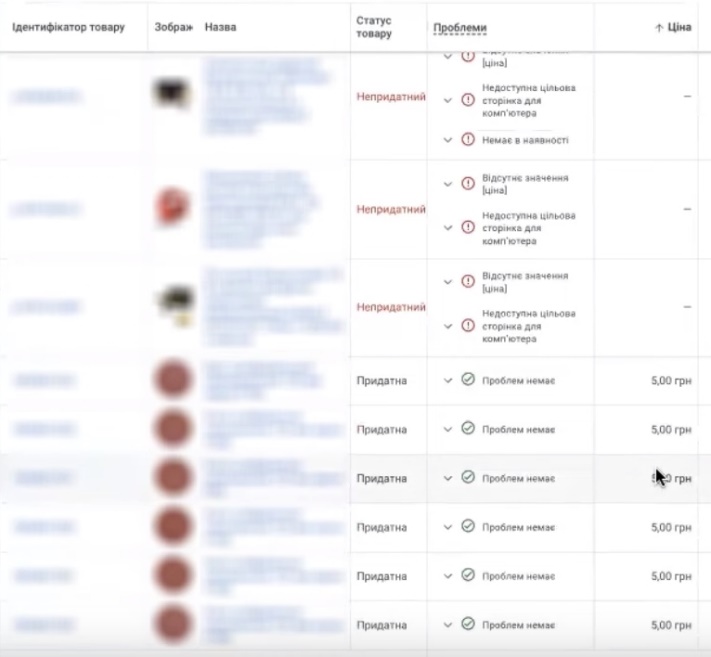
How many calls and sales will I get by ordering contextual advertising from you?
I need to calculate the conversion of my website Describe
the task
in the application
Calculate potential ad revenue Google
contextual advertising calculator
I’m not arguing that they can be combined with each other, but consider the fact that not all of these products need to be how to say conventionally…. Let’s not even put it that way. You have a lot of products of different price ranges combined here. In order for you to understand how to cut between the products, you need to analyze the product range by price. For what? For cheaper price ranges, usually set the price there for profitability and the price per conversion is much higher, and the price per profitability is higher (!!! Higher/higher????).
Because it doesn’t make sense to spend all the money in the world to get one sale there. Because it has to be in a very narrow sort of price-per-conversion range. Right? That is, look separately at your product range in terms of price, in terms of product type. Because you have products like “gasoline cultivator”. Here you have gasoline cultivators, look, there are only 34 items. They have received for two weeks only nothing shows there. Yes, there was one click, most likely at this price it will not generate any significant number of conversions or phone calls or something like that from one click.
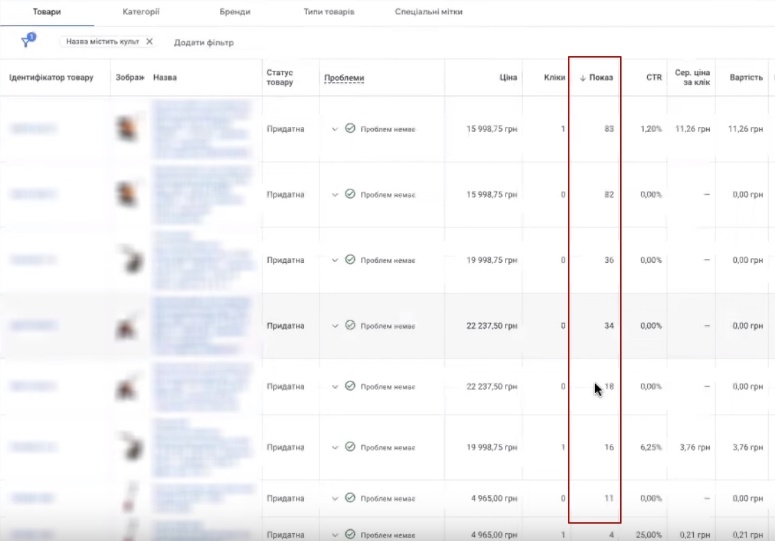
You need to look at your product range from a price point of view. Because there are certain price ranges of goods, such as these glue guns you have. Glue guns can be searched for separately. So this low check can be allocated separately somewhere, segmented there to certain values. You need to analyze your product range and divide it by price. Whether it will be there up to 700 UAH or up to 1000 UAH. Then 1000, 2500 and on and on it goes.

Or do you segment in some other way so that you can see which price ranges work well under these settings, which ones work worse. Because if you just look at impressions, what do we have here, 448, 8100. Let’s do conversions. We got 13,000 here, but it wasn’t a purchase. It was some kind of add_to_cart, something like that. There’s a 1,500 g’s worth of something. A dust collector for a vacuum cleaner. Right? Air filter. What else we got here? Nutcracker 4000. Here in the leaders here are goods up to 2000 UAH. Right? In conversions. Even right here up to 700 UAH. These are the kind of products they can come in pretty well just shopping up to a certain price range. They can generate phone calls and purchases. But if you look at your product assortment with the concept of type of goods plus price, that between each other can be recommended and segmented, the better you will do.
I am not going to name any real points, point by point, what you need to unsegment, unsegment. Because I have parallel competitors of this power tool subject. So in order not to create unnecessary problems in certain segments. Here, for example, tourist, some gas cylinders or other. This is for burners it should not sit at all with power tools here. Look at your 6,300 items. Even though they’re out of stock. But still, see if they were in stock. Look at your product assortment from the point of view of what should not overlap with each other. If there are accessories, some kind of chainsaw or something else, you can combine them. But, take into account that you need to keep a close eye on whether these accessories do not draw traffic there. Maybe there are accessories that are bought later. You know, like for a swimming pool, most likely they will buy everything at once, there are chemicals, something like that next to the purchase of the pool. For example, to some vacuum cleaners or something else, can often add some goods later. And it is not bad if the accessories to something will sit separately.
So, of course, you should not chase to have all these types of goods sitting separately, because this is absolutely absurd. It will be very expensive for you in tests, you will not understand what use and benefit it will have. It is better to go from the general, to combine similar products by concept, by the target audience that buys them. Go for less. In doing so, consider the average check you have here. A lower check will be very easy to get in phone calls, the same purchases. Higher check – there you will need to gather traffic much more in order to get that phone call or that same purchase.
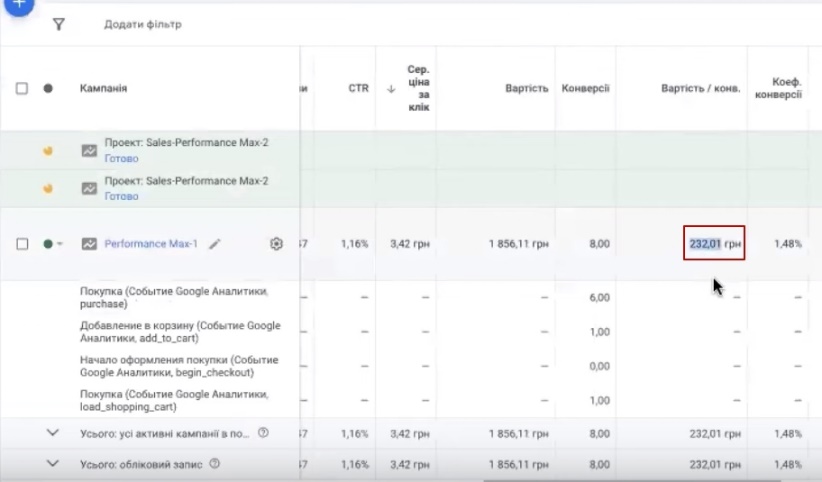
So that there was no such thing that you look at your campaign, there is 232 UAH price per conversion, “oh-oh-oh, my God, what to do next, everything is gone, chief everything is gone”. And there you go, and there it turns out that this price per conversion for goods that are more than 50 000 UAH. Having a different segmentation of different product groups from more to less in the context of more price ranges you will be able to more deeply understand in which categories or in which checks you favorable to this or that price for conversion. Just for all the goods 60 UAH. vlupit not everyone goes, well, honestly. Not all come in, there you need to look that the product range. It is a very big fairy tale when they tell you to do the same thing once, twice and you will succeed. It may not work for you.
What do you need to analyze to get a weighted average?
If you need an average weighted, with which you can continue to work, you need to analyze your product range in terms of what sits there, and how much traffic it pulls, is shown, is not shown, and what check sits in a particular category, for example, “materials for repair”. There is 28 UAH some commodity item.

Є 320. There are even 13000 UAH. At the same time, if you look, something of this very actively shown. In general, this category is practically unworkable, that for 200 UAH, that for 13 UAH and so on. Because these 400 UAH. Google can not effectively split. It’s partially, at least somehow closed in tool topics, and even power tools, those split shows, but they’re also few. So here basically the reason would be that you get very few clicks, that you assigned that target CPA and assigned a fairly high budget.
How should a CPA be assigned?
If you wanted such a targeted CPA, your starting budget should be, I don’t know, there in the amount of 60 UAH, no more, if you wanted. But still you would not have succeeded. You need dynamic call tracking, phone calls. They would dilute this sad picture and you would get the very 60 UAH. And so you duplicated a lot of conversions, the same add_to_cart here and still, it does not work. Pure analytics on the right conversions then you can work with it. Targeted CPA is not something I recommend setting. Look at the structure of your products. Try to divide them into at least two, three performances. No more, it’s not 10, it’s not 20. Here is your homework will be to group the product assortment into piles, into three pieces of such piles. How are they generalized? How are they similar? Here is to launch three performances, start for example from the budget, I do not know, there are UAH. 100, 120 something like that, you can set 200-300 and set profitability for them.
Division of goods into 3 campaigns performance
If you even upload phone calls here, it will be perfect profitability at all, it will also work. The average value of profitability can be 500-600. Then in each of these sections, you will make a price breakdown through the seller’s tags. You’re going to have three performances of these big piles of these products, and you’re going to segment each of them by price tag. Then you’re going to deploy these price tags like I did here, and see which of these price ranges within this big pile of products gets more or less impressions, clicks, at what price per click, higher, more expensive, lower, what is the conversion rate.
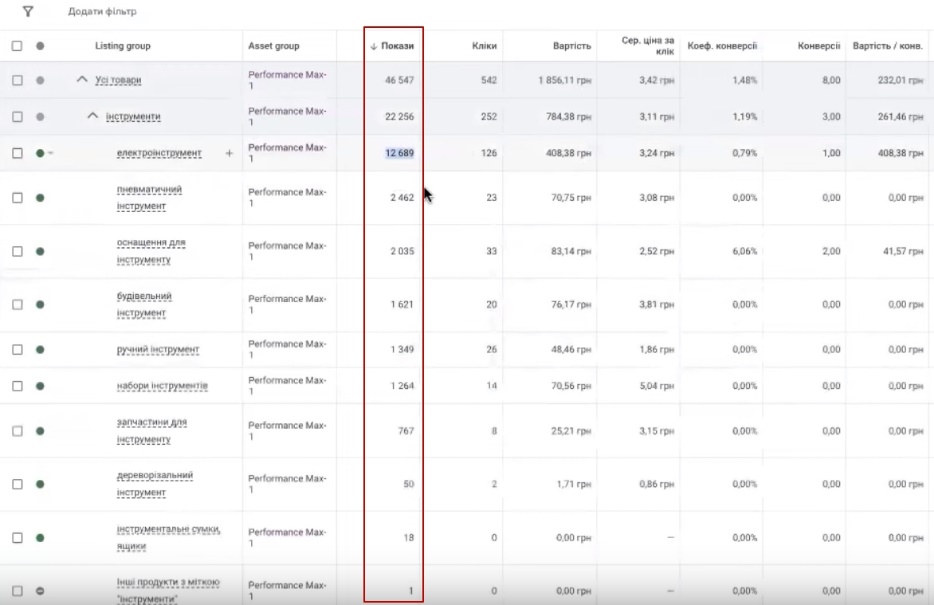
Because conversion rate, it’s always important. If the conversion rate is 1.5% or more, the easier it is to scale that product category just on a budget. If there’s 0.79% in that category. Is there someone that low around here? It’s hard to find someone. Low, then the scaling is going to be very tight here. You can say here almost 1.5% or here 6.06%.
You can at least try to put this category separately, try to skip it or it will make the same result because it is in the subject. But consider that it’s always easier to go from general to narrow. Because how? You’re going to have three piles of these commodities. I’ll call it a pile as ugly as it sounds, three piles of these products, in each of these products you should have a leader emerge, a group of products usually that generates more conversions relative to the others. Typically, what do we do? We wussies who reserve the budget for themselves….. And these are all the comrades who reserve the budget. They reserve it all for themselves, they also reserve it, but they don’t spend anything. We put them in a separate campaign, and the strong ones, conditionally, will be able to divide this budget among themselves more effectively.
In other words, we always leave the strong and pick out the weak. And so you will gradually form a structure that is optimal for it to be further advertised. Don’t be embarrassed if there are performances, there will be strong competition or something like that. Usually they enter into such a symbiosis. The main thing is that you do not, for example, make two campaigns for the same thing, such as power tools or construction tools. Then they are competing a little bit for displays. Some of them will get conversions, some of them won’t. Then it’s not a pure experiment. Make a distribution like this. Three max performance. Can you think of how you’re going to group the products there, how generalized? Maybe by niche, by customer. A price breakdown for each of them.
Why make a breakdown by price?
Why do we do a price breakdown? So that you can later, if anything, correctly edit the same profitability. Because if we see that, for example, the goods more expensive check, for example, more than 15000-20000 UAH, at a certain profitability, which you set, very little traffic get. Then in a new campaign you can lower this profitability in order to get more traffic, clicks as a consequence of these conversions. Because all the profitability that is set here, I remind you, is as well as the maximum conversions with a limit.
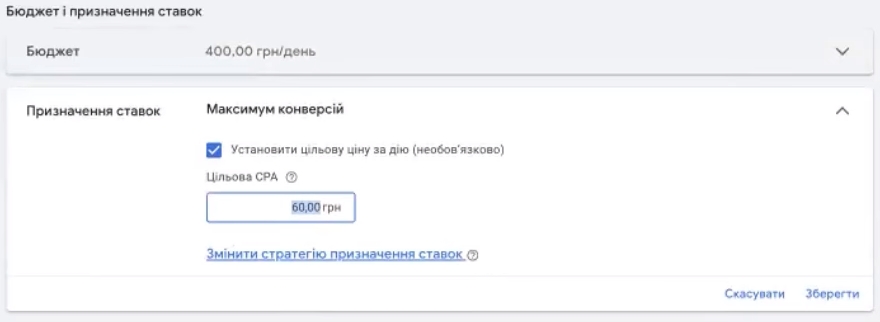
It’s just a coverage limiter. It’s just a setting that cuts coverage. As primitive as it sounds, if you take it in a global sense, the performance task, what algorithms there are sewn into any of these automatic strategies for a certain period. Of course, we don’t know what that period is Google doesn’t disclose that period. Reduce the discrepancy between your fact, looking at what you want there or profitability or target and your customization. That is to reduce that discrepancy. I mean at some point we’ll, I don’t know, a year from now, two years from now, or a week from now, it’ll all come together completely in the format that you need. I mean there was, we have 60 there. It is likely to reach 60 UAH there. But from practice it is a very long period you have to wait on target, on target CPA.
Change in profitability
You can see it more clearly on profitability. Because on profitability, there will be more coverage traffic. That’s why you perceive all the settings in profitability as a coverage limiter. If you see that, for example, you have 1000% profitability set, there are very few impressions. This is just a very high limiter on this base of analytics collected on this product of the structure that was formed before. It doesn’t mean that 1000 is a very high profitability value for your niche.
No, it’s just a limiter. You reduce it a little bit in order to incentivize the readings and that’s how you play. In some price ranges it will be necessary to set the price for profitability higher, and somewhere lower. Most likely on goods for 800 thousand hryvnias it will not even make sense to play there with profitability of 500-600 or 1000%. There most likely need to play in general with profitability 100, 200, 300, if you want a lot of conversions, but taking into account the proportional result. If you have a generator for 5 thousand hryvnias next to you, you should set restrictions for it. You just need to globally analyze your structure, look at the price ranges there and try to divide them.
Because by dividing, each of the campaigns, you will assign a personal budget, at least. Then you’ll assign them a profit margin. And you will have to work with these profit margins from now on. If suddenly a campaign gives a very low effect in profitability, then your task will be to raise this profitability in the settings. That’s how the pieces will grow and so on. If your profitability will be higher than what you set in the settings and what you, for example, would like you personally according to your personal target KPIs, then you will only be able to scale it with your advertising budget.
About errors in feed design
It seems like everything I’ve described here is kind of simple. Simple truths of some kind. Right? But few people do them at all, or few people operate with them so constantly in their work. Because there are no miracles. Yes, if someone with such settings something worked, it is necessary to analyze in great detail, in principle, your product range is very similar. Because here, at the very least, in principle, there are simply errors in the design of the feed. Not to mention something more global. Yes? As we have here “Beauty and Health” or there in “Cookware” sits, there are whisks for this, for concrete or whatever it is for – tear it off and throw it away. A knife with a breakaway blade, then let it still be a stationery knife, let it still sit there. But in essence, there are very few products that work. In order to stimulate them, you need to turn the road in a different direction.
Launch budget and “maximum conversions” strategy
Or you can take this same strategy of maximum conversions, initially launch without limit. That is your task, there you can, whatever budget you want to use. The main thing is not more than 12 dollars. I recommend, always much less, even there equivalent of 5-7 dollars, you run it, collect analytics and see. Here it is in 7 days what you wanted or not.
If it’s not what you wanted, you cut the budget or cut the campaign into parts, so that each product range has a separate budget to roll it out separately. Then again look, if there for 14 days, there the collected number of conversions will be decent, there are more than 10 pieces and you are satisfied with the cost of conversion, then you can already assign the cost of conversion. But not before. This is a very big mistake most projects make, that they rush to assign limits to these campaigns before anything even happens here. Here’s this example of that reality.
Necessity of callteking application
Don’t forget about phone calls. You don’t have a niche where there will just be purchases generated somehow. If you want phone calls, you have to connect dynamic call tracking. Whether you want to or not, you can quarrel with me, argue with me, beat your chest and prove something else. No. If you give the account a pure analytics, any automation can work on this analytics. If you start, like, let’s give a click on a phone number, or let’s do something without phone calls, then don’t be surprised that the result is mediocre. The fact that you do not have a niche that is bought simply through the shopping cart. The specifics of just a target audience, a target client.
Bottom line. What to do to increase the number of sales
If this is summarized, in order to increase the amount of traffic, proportionally the number of sales, respectively, slightly reduce the target profitability. The first thing you need to do is put a buy tag on the site. Secure it properly.
The second thing is to be sure to review your product assortment. How do you break it down into at least three components of an advertising campaign. I don’t know how you’re going to do it. I’m not giving you a ready-made toolkit. Because I’ll be creating competition for my clients. Think about how to break it down. Here’s three segments of something. Don’t do a lot, because I will say something later, it is taken literally – three. We go from the general to the narrower. We tend to pick the weak in individual campaigns. Just the weak. We leave the strong ones behind.
Next, revisit your customization strategy. Because one, it needs phone calls in the form of conversions other than the buy tag. Two, there’s always more traffic on profitability, there’s always more traffic. You have to take that into account. There’s no other way to do it. That’s the maximum conversions to start, for the minimum number of conversion values out there. And that’s if you fit into that story. You need a smaller budget. You can do it without restrictions.

Unlimited is usually started from scratch on campaigns with a set price per conversion. The probability that Google will hit this price per conversion is very low, and we can’t wait for some period of time for it to bring it to a certain stable level.
What profit margins are worth starting with?
What profit margins can you start with? Depending on the price range you will be starting at. In general, the average is 500-600%. Further you can both raise it and lower this profitability, bring it up to 1000% or not, or reduce it. Your task is to constantly watch how the budget is distributed by the performance itself. Where he gives this part of the budget. In this case, he’s giving it to tools.
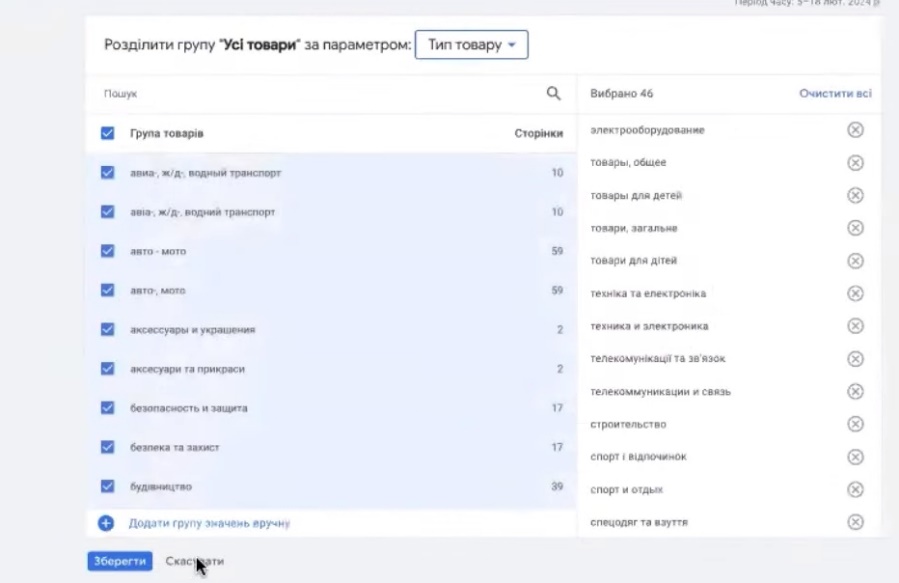
We have power tools. He reserves a large amount for this story. Can it generate a significant number of conversions? As you can see, no. There is a weak conversion rate here. The price per click in relation to this conversion rate is quite high. You need to take this nuance into account, analyze your product range even deeper, see what’s what…. You see, the grinders are pulling some of the budget. The wrenches here made that conversion alone.
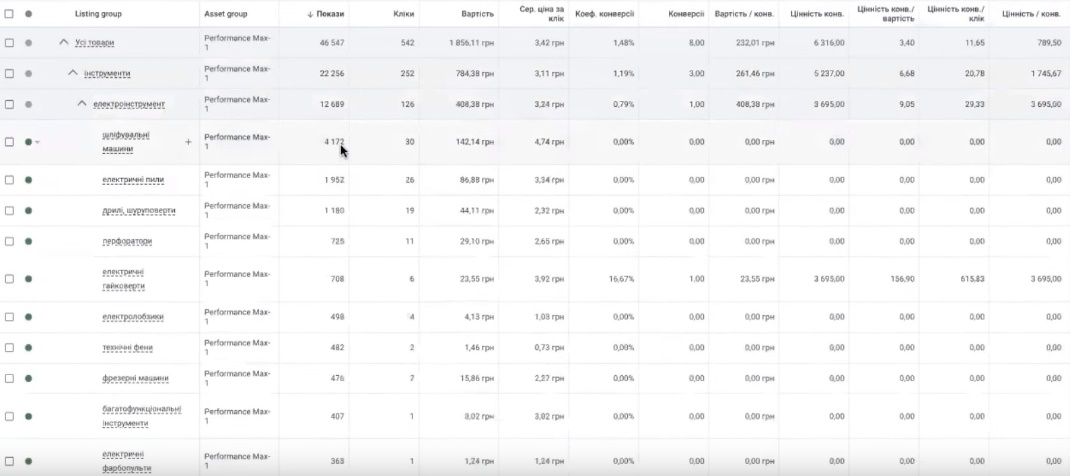
If you look at this one, 1026 UAH, performance, it didn’t drain the money anywhere. Let’s look objectively. We open this power tool, there 400 UAH he spent in total. One conversion 400 UAH. – very expensive. If we look at commodities, you see 15, 14 hryvnias, 10, 10. There will be a lot of goods that there are 3 to 1.5 hryvnias spent there. If there will be such, here are 3 hryvnias. 3, one click. To say that performance doesn’t understand who to target your goods to at all would be completely incorrect. But this nuance of keeping the balance between the cost part and the result you want to get – this is the value of the specialist’s work. Because the performance here did a pretty good job even with this power tool. He stretched this money on goods. Let’s be objective, 15 UAH per product is not such a big sum. But, if you want a certain payback, a certain efficiency, you need to give them more budget at the same time and switch to another bid strategy. If you want to continue, for example, just on conversions, you can use call tracking on smaller budgets. As I said, we start without limitation, see what price per conversion he can give. This is very important. The cheaper the price per conversion, the more statistics we collect. Then we connect this limitation and increase the budget. That’s how 400 UAH. Just for nothing on conversions here is the result of 232 UAH. Take that into account.
A breakdown of products into three performances. Viewing products by category
My recommendation is to split it into at least three. Let each of them receive 100, 200 UAH of this budget. There will definitely be more traffic, that’s 100 percent. When grouping these products, pay attention to their similarity to each other. That is, the products should be optimally similar to each other. It should not be, for example, I don’t know a screwdriver in the same campaign and this motorized cultivator. Whoever buys a motorized cultivator, he can buy this screwdriver. But let’s be objective, all that agricultural machinery and other things, it can be bought separately. These motorized cultivators, there are motorized blocks and so on, it can be separated. If the time goes season on this story, it can be fluffed right separately, generate traffic and sell it.
That is, revise your product assortment. Well, first of all, correct these product categories. If there is just “Health, Beauty”, there is “Personal Hygiene”, “Oral Care”, I don’t know what you expect, toothpaste, crossing with grinders. Reconsider, maybe “Oral Care” should be separate somewhere altogether. If I understand this product line correctly. There are even products for children. Maybe it’s a children’s product – a cultivator attachment for brushcutters. I just your product assortment sat it so long spinning. Honestly, I don’t get it. Google lists it as attachments for tillers and cultivators.
I don’t know why it’s in toys, although you know men, they also like toys. Let me check the website. I don’t know, it doesn’t look like a toy. I mean, honestly. Something went wrong. You’re the one who assigned the product type. The product type is involved in targeting.
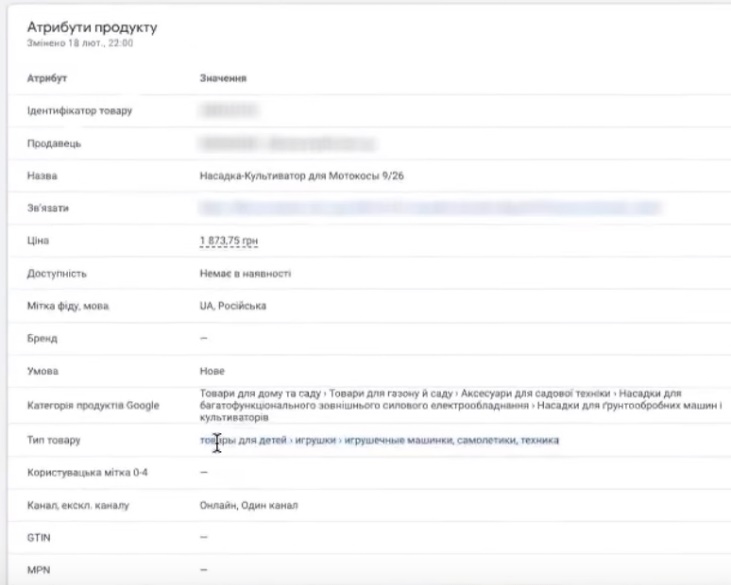
Don’t forget – proper categorization, proper definition. If you want, there for farm machinery here’s a cultivator attachment with a power tiller you can cross freely, here’s freely. Huh.
Tweak the feed, revisit again google product categories, are they all right or wrong. 3000 products seems like a very large number to you. In fact, it’s not a large enough number of products. Reconsider the type of product, because it participates in targeting. If you have some specialized clothing, there is some kind of robe or elements of this robe, bring it out separately so that you control it. Gasoline stove, it is possible to divide it by areas. There is separate construction, there is separate agriculture, there is something else. Because the same screwdriver can be bought by Vasya, who lives in Kiev, and Vasily Petrovich, who will buy a motorized cultivator. Your task will be to look, to look, to divide, well, you want to divide them into two performances. You can do three.
Well more than that, I don’t recommend it, because it’s a bigger budget to spend. You may not be happy with these clicks that you will collect. In principle, performance normally adequately distributes shows. There are no goods that would just blow the budget into themselves and that’s it. I mean, even in terms of cost. I’ll take this group of objects, because I created this one. Okay, let’s go to merchandise. All goods. Look, there is not a single commodity item that would be there, for example, 700 UAH, 300 UAH, there 150, 120 UAH.
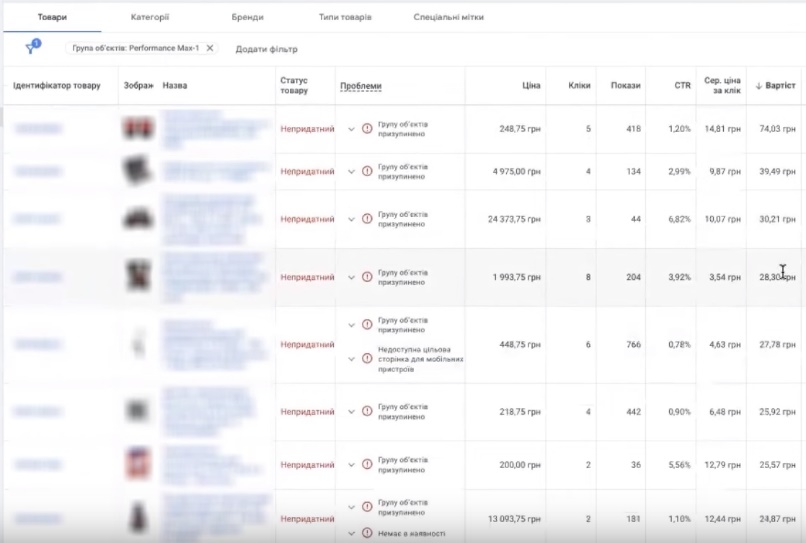
Well done, your performance. He did what he could with what he had. Here he is you see at 13 UAH, at 14. I realize that it is expensive, so you will cut them among themselves in order to increase your control over the performance of these performances. Price range also plays a role in assigning bids. For profitability, Google looks at this average price that is posted here and it also takes it into the auction in order to determine what traffic is needed, what traffic is not needed. You don’t have to lump everything into one story, at the very least you can at least try to categorize Google. But tweak before it really their types of goods. I don’t know, put a concrete whisk in “Cookware” and some toothbrushes in “Health”. You need to reconsider your concept of categorizing products on the site.
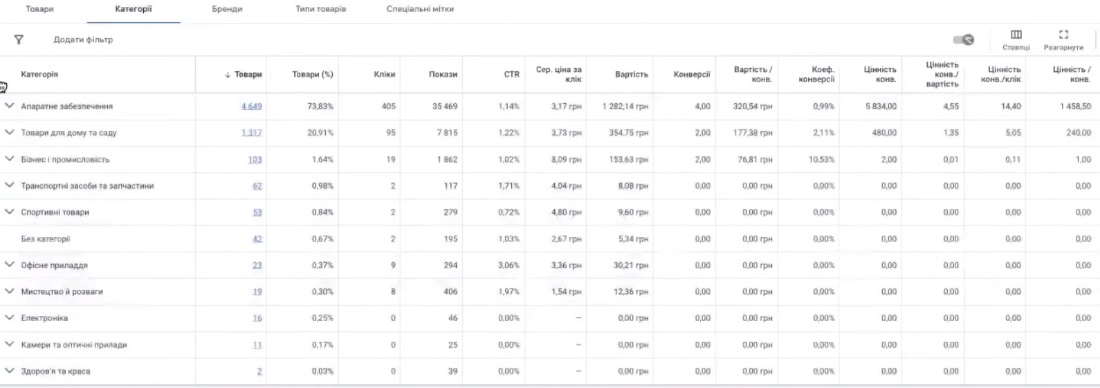
And this map here. You can at least see here the breakdown of what to do. So you still need to do something to increase the amount of traffic. It should be removed, put another profitability, but profitability may not come, because you have a very wide range of prices. There are from 5 UAH. and went on to 800000 UAH. In general, goods, there are more, there are 70,000 or more than 100,000, I recommend, in general, to allocate in separate performances, because they will bear more costs. There the price per conversion will be definitely more, because these people, they are not spontaneous, they will not quickly make a decision to buy. These will only be phone calls, and only through phone calls you will be able to assess whether there is an effect or not.
Conclusions
So, as if we were running through a general picture. Of course, if there were more advertising campaigns here, or some more detailed analytics, we could look at a specific structure or something in practice. Now here is a general, this is the picture. The right purchase tag, connect call tracking, try profitability, or on conversions in the beginning without limitation to see if it can budget conversions and break down these performances into component parts. Poke around the products and internally do the same price breakdown at the product group level so you can see what price per conversion, bid strategy or profitability works better for what price range.
It may simply come to such a story that you just have some one campaign, there on the check, for example, up to 5,000 UAH, it will wrench conversions, no matter what the product range, from what categories. This can be very easy. But still it is necessary to understand these all dependencies, because these all points will be used in the performance in the betting strategy.
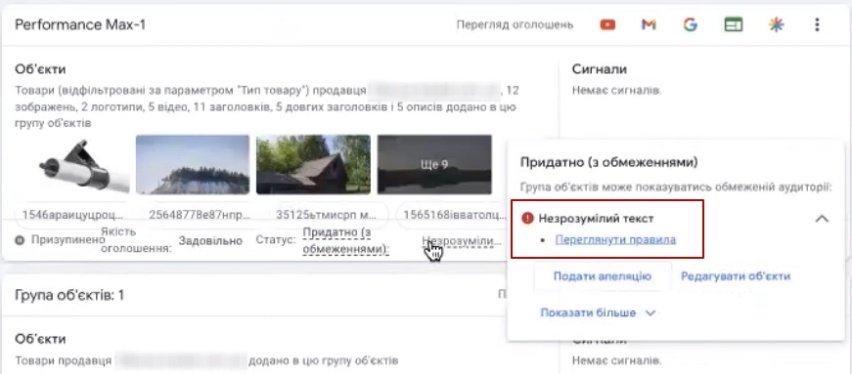
And of course, don’t make this kind of abracadabra story in groups. You see, even Google is writing you incomprehensible text. What do you want? I’m going to pause here, because now you’re going to have shows. Because if there are no shows for this story, it’s better without object groups, then start and don’t worry, if you see that you can’t handle this abracadabra.
Okay, that’s it.

